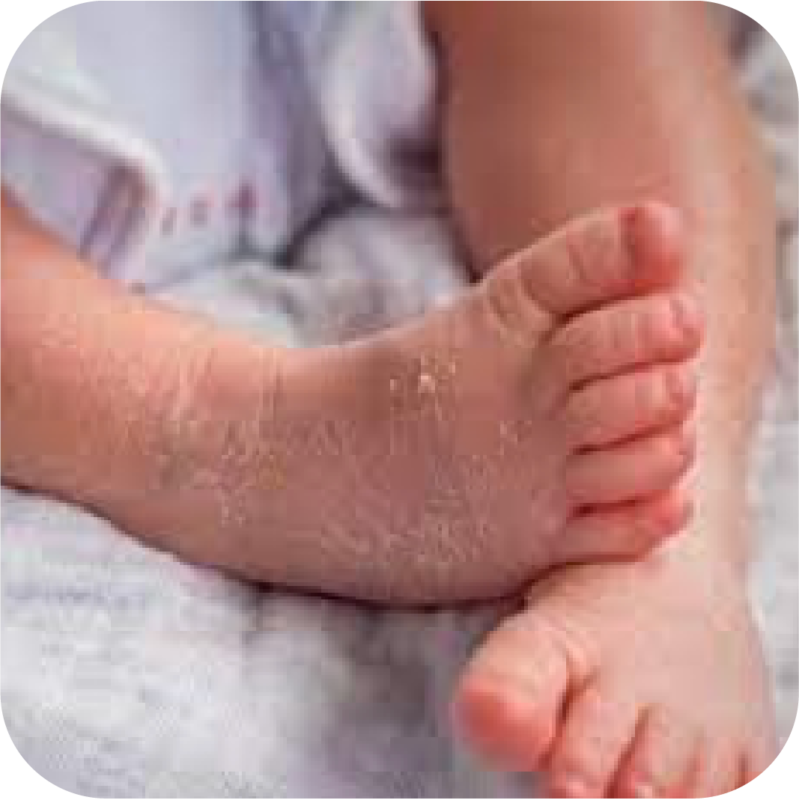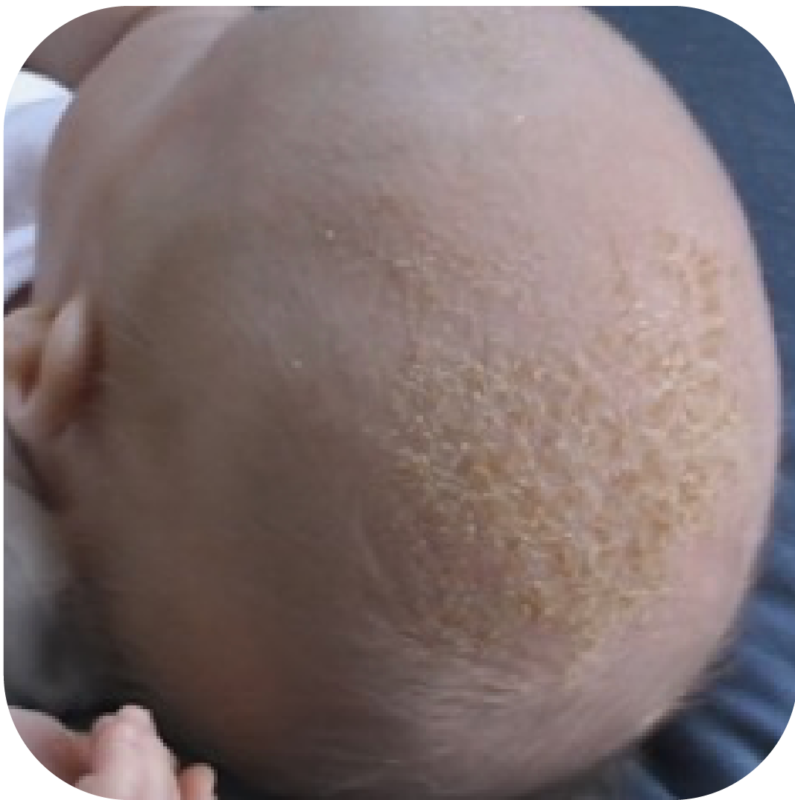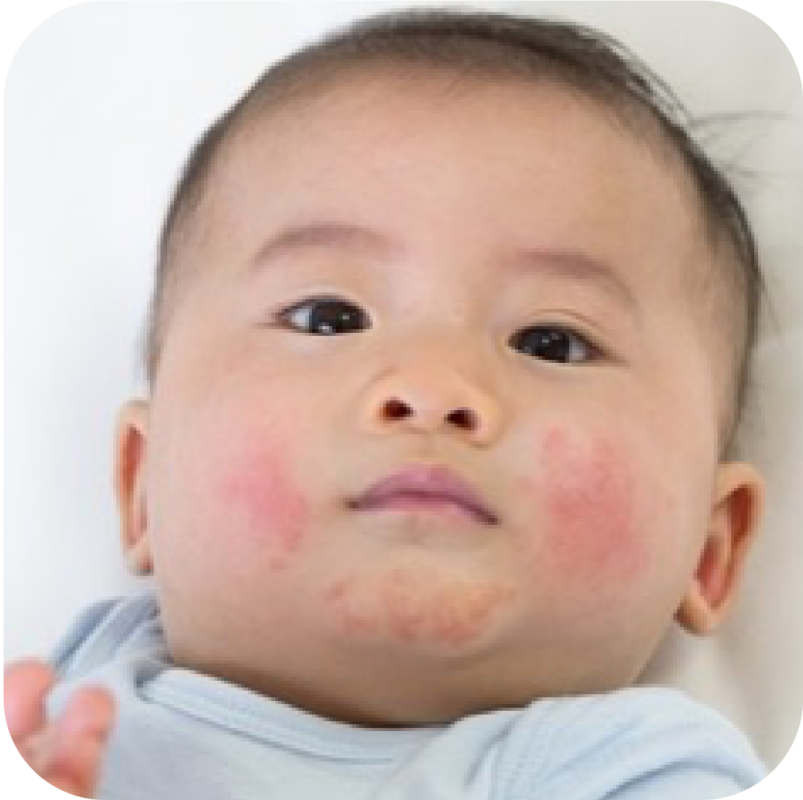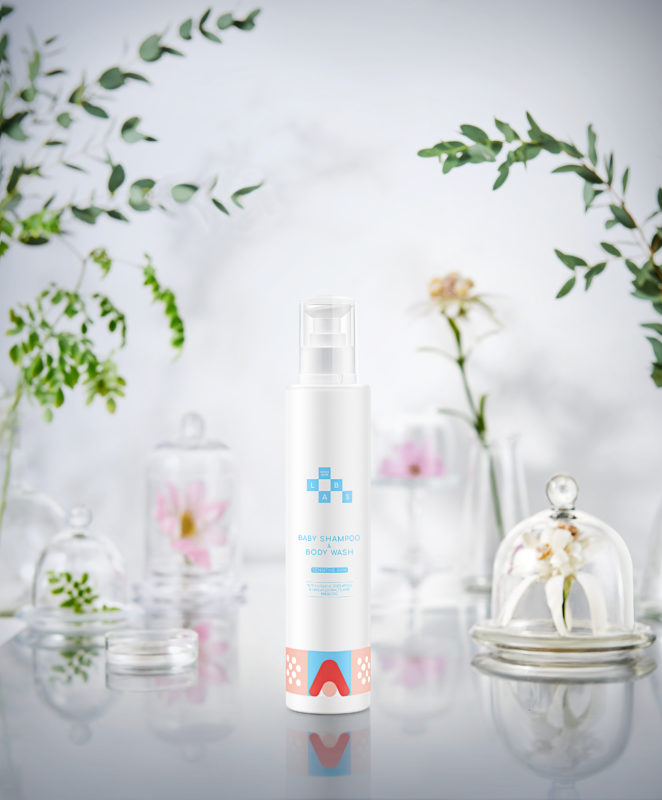A baby's skin is much thinner and fragile than an adult's and needs to be specially cared for. Our skincare line has been designed for all skintypes particularly newborns skin conditions which include desquamation, cradle cap and infant exzema.

Desquamation
Or skin peeling, is something that affects most babies in the first few days of life. How to treat it: Apply a moisturizer to the skin.

Cradle cap
This is a crusty greasy scalp rash that commonly occurs in the newborn and slightly older babies. It happens when there is a build-up of sebum (an oily substance produced by glands in the skin) that, in turn, makes skin cells stick together instead of shedding normally. It can occur on the scalp alone or with a diaper, neck, or underarm rash. How to treat it: Apply a massage oil or a nourishing body lotion to loosen the crusts.

Infant Eczema / atopic dermatitis
Eczema doesn't look the same on every baby. In babies with light skin, it usually shows up as patches of red skin. In darker-skinned babies, the rashmight look purplish, brownish, or grayish. Thesepatches are almost always dry, itchy, and rough. Most often, it affects their cheeks and the joints of their arms and legs. Causes: Problems in the skin barrier, allowing moisture out and germs in. How to treat it: Apply a prebiotic skincare to help strengthen the skin’s barrier function.


 English
English 简体中文
简体中文